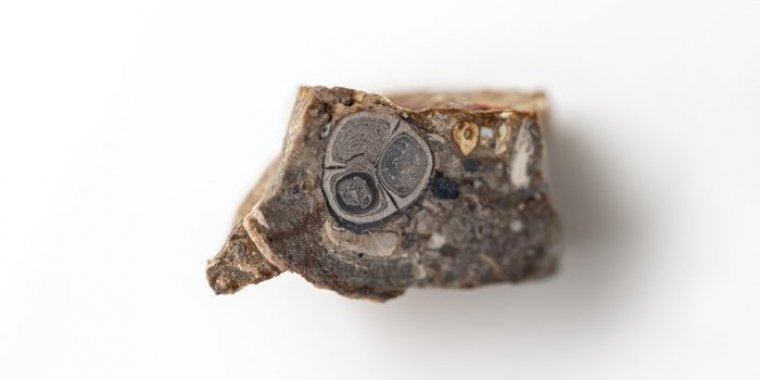| News / Science News |
Fossil fruit found buried beneath ancient Indian lava flows
Just before the closing scenes of the Cretaceous period, India was a rogue subcontinent on a collision course with Asia. Before the two landmasses merged, however, India rafted over a "hot spot" in Earth's crust, triggering one of the largest volcanic eruptions in the planet's history, which likely contributed to the extinction of the dinosaurs.

The fruit of Euphorbiotheca deccanensis was likely fossilized some 66 million years ago. Photo: Florida Museum/Kristen Grace
In a recent study, scientists excavating the fossilized remains of plant material wedged between layers of volcanic rock describe a new plant species.
The work is based on the presence of distinctive fruit capsules that likely exploded to disperse their seeds.
The fossils may be the oldest fruit discovered to date of the spurge family, or Euphorbiaceae, a group of plants with more than 7,000 species, including the poinsettia, castor oil plant, rubber trees and crotons.
The fossilized fruits were discovered near the village of Mohgaon Kalan in central India, where the remains of the volcanic rock lie just beneath the surface in a complex mosaic.
"You can walk around these hills and find chunks of chert that have weathered up through the topsoil," said senior author Steven Manchester, a paleobotanist at the Florida Museum of Natural History.
"Some of the best collecting is where farmers have plowed the fields and moved the chunks to the side."
Although there is some uncertainty in the timing, the volcanic eruptions are thought to have lasted for up to 1 million years, occurring in prolonged pulses that blanketed the surrounding landscape in thick lava layers up to 1 mile deep.
Today, the basalt rocks leftover from the eruptions, known as the Deccan Traps, cover an area larger than the state of California.
Sandwiched between the basalt, paleontologists have found shales, chert, limestone and clays stacked in a giant layer cake of alternating bands, most of which are rich in the fossilized remains of plants and animals.
These fossils provide a glimpse into what seem to have been relatively calm periods of stability between massive lava flows.
The newly described species were likely shrubs or small trees that grew near hot springs created by groundwater interacting with naturally heated rock beneath the surface, similar to the present-day environments in Yellowstone National Park. (National Science Foundation)





